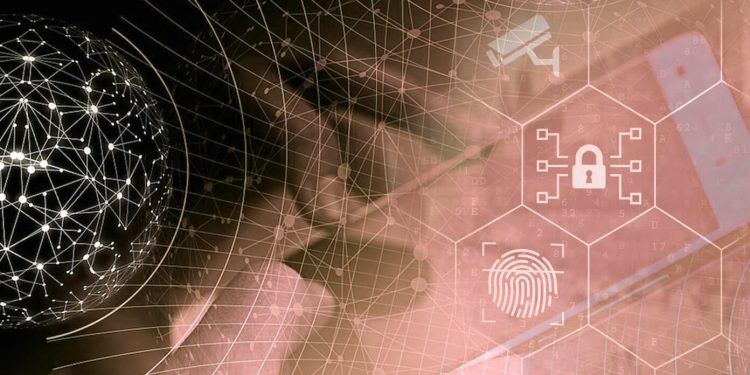Cybercriminals have benefited dramatically from the new environment individuals have found themselves in following the global pandemic.
Scammers, fraudsters, phishers, and blackmailers have access to plenty of low-hanging fruits thanks to working from home, society’s accelerating automation, and the more online character of our lifestyles.
Furthermore, there is no evidence of this slowing down as we approach 2022. That’s why organizations and individuals must be conscious of the ever-increasing attack vectors and what can be done to reduce the dangers.
So, let’s dive into the most crucial and significant developments that will affect our cybersecurity in the coming year and thereafter!
Top Cybersecurity Trends
AI Flourishes
Cybercriminals today are agile, work in small groups, use up-to-date software, and are usually adamant on their plans, desperate to discover a program and manner of interaction that will persuade their target to allow them access to the specific database.
The good thing is that their days of dominance may be limited. For the upcoming wave of security mechanisms, artificial intelligence holds a lot of promise.
A system responsible for making a corporation’s data impermeable can give deep insights and continuous activity surveillance when AI is used.
Among the AI-based activities that can be taken are the generation of preventative platform assessments, runtime surveillance, authentication and certification of a platform’s safety condition, and the collecting and analysis of data to facilitate automatic notifications when abnormal activity is detected.
As AI becomes a more important tool for cybersecurity, anticipate it to be very well-designed, with fewer intrusive software upgrades and speedier terminals that eliminate data transfer blockages.
Currently, the available solutions are helpful only after an attack has already happened. These methods are based on antiquated standards that only offer boot-time safety and depend on a shaky ring of confidence.
A new strategy is needed to provide secure and private computing. A transition to AI, which might happen as early as 2022, would fill critical holes in the cybersecurity market.
The Zero-Trust Strategy Will Remain in the Public Eye
Conventional security strategies are based on the “castle and moat” concept, in which security procedures emphasize keeping intruders out.
This method presupposes that any individual who has the necessary credentials to enter a system has done so legally and that the organization can rely on them to navigate the systems unencumbered.
The notion of a safety perimeter, as we understand it, is becoming redundant as more enterprises shift their information and activities to the cloud at a faster rate.
As a result, businesses will strive to emphasize adopting a zero-trust safety architecture, limiting network connection to those who require it.
This approach believes that danger can come from everywhere and restricts unwanted network mobility. A dynamic company environment will benefit from a zero-trust, realistic view toward cybersecurity.
Attacks on Shareware
Shareware is corporate software that is given free of cost to customers. It’s frequently given away as free software to entice customers to purchase the parent program. Shareware is generally harmless, although it can be dangerous at times.
Shareware cyberattacks have hit many businesses in the last few years, proliferating the count.
Cybercriminals can exploit it in 2022 to spread viruses that can escalate to malicious assaults. Organizations may expose themselves to unfavorable publicity.
Identifying and Addressing Vulnerabilities at Their Source
Cybersecurity is based on a sequence of trust architecture, which implies that each connection in a networking infrastructure is required to authenticate its previous and subsequent links, inspecting them to discover and destroy malware in concealment.
The chain starts with the equipment and how well it performs at startup.
Because software has failed to deter cybercriminals, a switch from outdated programs toward a better integrative and complete network security system that prioritizes equipment as the bedrock of anti-cybercrime activity may be the most important trend to observe in 2022.
Specialized security orchestrators would almost certainly be built into next-generation systems. Equipment can be safeguarded at the circuit level with a trustworthy control module, preventing unlawful network intrusion.
This security-by-design may assist provide extra layers of security, reducing the danger of an attack on software programs that are particularly vulnerable in the chain of confidence.
Software programs, for all the good they offer for a corporation’s ability to deliver outcomes and form business goals, are often the most potential victims of a successful attack.
As cybersecurity professionals realize that hardware may provide a far higher degree of security, this shift to hardware may accelerate in the following months, albeit this does not imply that businesses should cease investing in improved hardware.
Ransomware: Cybercrime’s Next Ransack
Intruders will tend to go after low-hanging fruit in 2022, but costs for recovering crucial data would probably drop as companies’ threat awareness grows and new defenses are implemented.
Organizations will have to examine their vendor relationships as well as the accessibility and monitoring procedures they use for internal capabilities.
As the virtual supply chain becomes more critical, hackers will become increasingly interested in it.
Furthermore, until firms can develop a meaningful cybersecurity environment, properly train personnel, and enhance personal hygiene and cyber-behavior, social networking will be the dominant form of attack.
Also Read: Cyber Security for Small Businesses is Important Now
Summing Up
When the COVID-19 outbreak entered its second year, hackers got more audacious, a rush of new dangers, solutions, and business strategies developed in the security arena.
The cyber security industry is gradually getting a facelift. Advancements in information security will change the way cybersecurity is perceived.
With most organizations conducting activities in cyberspace, a robust cybersecurity solution is no longer an option – it’s a requirement if you want to offer ironclad safety for your organization and your customers.
Avoiding becoming prey to such operations could be as simple as pinpointing important attack sectors and predicting likely attack scenarios.







